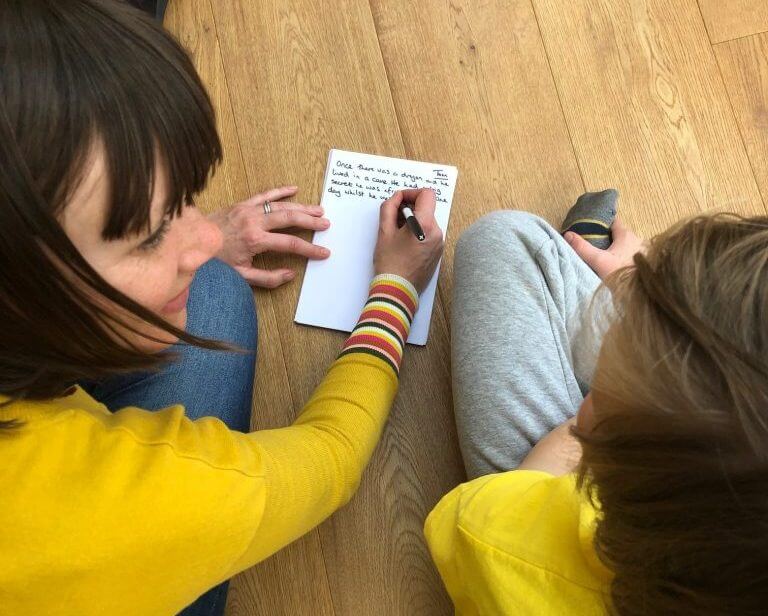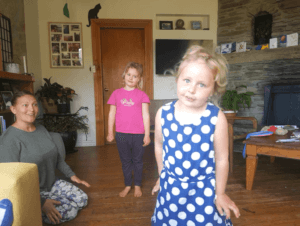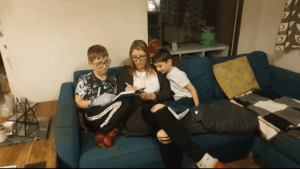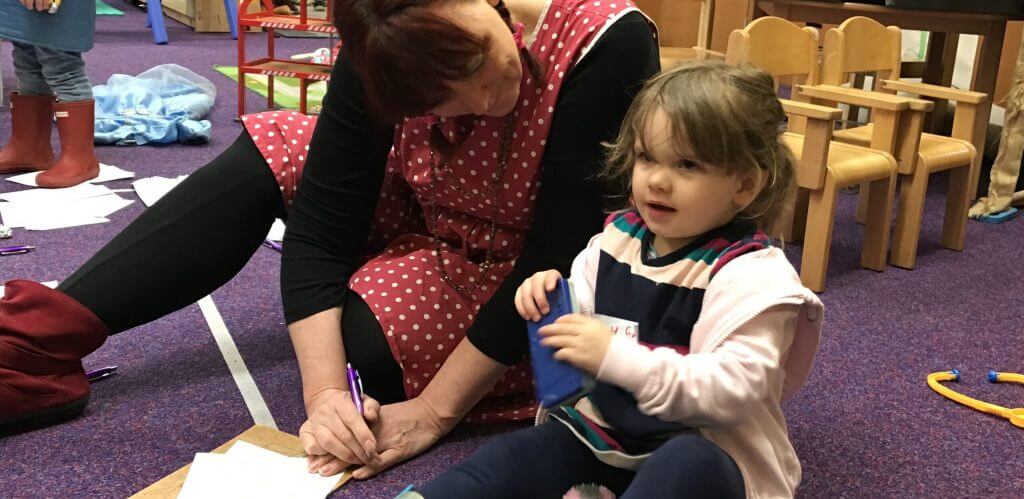Helicopter Stories at Home: Doing Stories Everywhere


With many schools and nurseries closed, or remaining open for only a small section of their community, we’ve had several requests for information about our Helicopter Stories at Home programme, in a format that can be passed on to parents.
Helicopter Stories at Home was designed especially for practitioners wanting to share the approach with parents and carers. It works in much the same way as Helicopter Stories but has been adapted for families.
The good thing is, you can use Helicopter Stories at Home with as little as one child. It is suitable for age two upwards, and because it is routed in play, children can adapt the rules, making it work across a mixture of age groups.
Before we launch into some basics, the most important thing is – have fun, and let the children lead. This is their story, and their way of telling it. Joy of joys, there can be no right or wrong.
Helicopter Stories is a simple approach, based on the work of our late patron, Vivian Gussin Paley. It involves scribing a child’s story verbatim, word for word, and then taking the time to act it out.
Below are some of the points for parents and carers that are included in Helicopter Stories at Home.
 Listening To Your Child’s Story
Listening To Your Child’s Story
It is possible that the story your child tells may test your idea of what a story is. Early stories from young children can be just one word, or a few short sentences, or a list. That is fine. For children to grow into confident storytellers they need to be able to tell their stories freely, without interruptions, to trust that whatever they say will be written down and acted out.
Try Not to Interrupt
When your child is telling their story it might be tempting to ask questions, such as – ‘What happened next? Tell me about the tiger. Was it big? Was it scary?’ Try not to do this. Just listen. Hear each sentence, and then write it down exactly as it was said. Let it be the child’s story.
Later, if you want to, as it’s Helicopter Stories at Home, you can write your own story too, and maybe act that out with your children as well. Or you could ask your child if they would like to scribe your story too. It doesn’t matter if it is in emergent writing or they can’t spell some of the words. Between the two of you, when you act it out, you will remember what it said.
Write Your Child’s Words Exactly
Try to capture you child’s way of speaking. They may make grammatical mistakes but don’t correct them during their storytelling. You can model correct language at any time. Let Helicopter Stories at Home time be about creativity and celebrating your child’s unique voice.
When we are working in the classroom the paper we use is A5 size, but as your at home you can choose the size. If you have a notebook use that. You could use a different notebook for each child. Or fold several pieces of A4 Paper in half and create an A5 book. Your child might want to design the cover.

Make A Stage
Think about where you want the stories to be acted out. In classrooms we use a masking taped stage. At home you might want to define an area of the carpet. Or maybe your stories take place around the whole of a room, or move down the hall and up some stairs. It’s up to you. Ask your child to work out the rules. Where should the stage be? If they’ve been doing Helicopter Stories in their classroom they might start looking for masking tape. But you don’t need it. Your acting area can be in front of your settee, in a corner of your kitchen, or even outside.
When you are acting out a story, let your child be the expert. They can show you how they want their story acted out. Ask them which character they would like to be, and then find out which character they would like you to play. At school the adults don’t usually join in with the acting out, but at home, the rules can be different.
Helicopter Stories at Home can be a great opportunity for families to act in stories together. Other siblings can also join in, each taking on different roles. Or if there are only two of you, the adult can move seamlessly from being the mummy lion to becoming the tree under which the baby lion sleeps. Think of it as joining in with their play and bringing their words to life. And most importantly, having fun.
Just as equally as the child can’t do anything wrong, neither can you. Just play, try not to take over, and release your inner child!
I think a good dose of play is something all of us could do with at the moment.
Helicopter Stories at Home
For more about this new programme please click on the link below
Click Here
 Listening To Your Child’s Story
Listening To Your Child’s Story





I’ve been doing the Helicopter Storytelling in nursery in the past and most of my children are EAL/quiet. Is it ok to ask or prompt when they need some encouragement? They do get some ideas from children who are able to say more but I find they want to join in too so a little questioning helps put something or their drawing on paper.
Thanks Wei (nursery teacher)
Hi Wei, you have to do what you feel’s right for you and your children. I tend not to prompt. One word can be a story, and when the child gets to act it out I learn so much more about what they are saying, or what is contained within their story. Supposing the story was ‘Tiger’. When we do the acting out I ask the child to show me how the tiger moves around the stage. Does your tiger make a noise? Wow that’s a really loud tiger. So for me the support happens around the stage, during the acting out, rather than at the scribing time. I am so glad you children are enjoying Helicopter Stories. That is the most important thing. x
Thank you for providing this for families! I just posted it on my facebook page, Things to do with kids at home. You might want to check out…
Hi Wendy, thank you for sharing this. I have messaged you on your facebook page. I couldn’t find the Things to do with kids at home – but I would love to see it. x
Thank you for this! We have been doing Helicopter stories since you visited us at Bushmead Primary School with our Reception children. Being one and a half terms in to the school year the children were really getting into it – so I’m really grateful for this information. I have included a link to it in tomorrows home learning pack so that hopefully some of our parents will pick up from where we left off before closing.
Please do let me know how you get on. I would love to see some of the stories that get told. xx